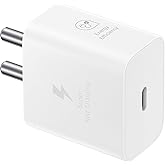ಸುಪ್ರೀಂ ಕೋರ್ಟ್ ವಿಮರ್ಶೆಯನ್ನು ಮೇಲ್ಮನವಿ ವೇಷ ಎಂದು ತಿರಸ್ಕರಿಸುತ್ತದೆ
ಸುಪ್ರೀಂ ಕೋರ್ಟ್ ಪರಿಶೀಲನೆ ಅರ್ಜಿಯ ಮಿತಿಗಳನ್ನು ಸ್ಪಷ್ಟಪಡಿಸುತ್ತದೆ
ಭಾರತದ ಸುಪ್ರೀಂ ಕೋರ್ಟ್ ಪರಿಶೀಲನಾ ಅರ್ಜಿಗಳ ದುರುಪಯೋಗದ ವಿರುದ್ಧ ಬಲವಾದ ತೀರ್ಪು ನೀಡಿದ್ದು, ಅವರ ವಿಶಿಷ್ಟ ಸ್ವರೂಪವನ್ನು ಮೇಲ್ಮನವಿಗಳಿಂದ ಒತ್ತಿಹೇಳುತ್ತದೆ.ನ್ಯಾಯಮೂರ್ತಿಗಳಾದ ಅಹ್ಸಾನುದ್ದೀನ್ ಅಮಾನುಲ್ಲಾ ಮತ್ತು ಎಸ್ ವಿ ಎನ್ ಭಟ್ಟಿ ಅವರನ್ನೊಳಗೊಂಡ ನ್ಯಾಯಪೀಠವು ವಿಮರ್ಶೆ ಮತ್ತು ಮೇಲ್ಮನವಿ ನ್ಯಾಯವ್ಯಾಪ್ತಿಗಳ ನಡುವಿನ ಗಡಿಗಳನ್ನು ನಿರ್ವಹಿಸುವ ಮಹತ್ವವನ್ನು ಒತ್ತಿಹೇಳಿದೆ.
ಅರ್ಜಿಗಳನ್ನು ಪರಿಶೀಲಿಸಿ: ಎರಡನೇ ಅವಕಾಶವಲ್ಲ
ಪರಿಶೀಲನಾ ಪ್ರಕ್ರಿಯೆಗಳು ಮೇಲ್ಮನವಿಗಳಿಗೆ ಬದಲಿಯಾಗಿಲ್ಲ ಎಂದು ನ್ಯಾಯಾಲಯ ದೃ ly ವಾಗಿ ಹೇಳಿದೆ.ಸಿವಿಲ್ ಪ್ರೊಸೀಜರ್ ಕೋಡ್ (ಸಿಪಿಸಿ) ಯ ಆದೇಶ 47 ನಿಯಮ 1 ರ ಪ್ರಕಾರ ಅವರ ಉದ್ದೇಶವು ಕಟ್ಟುನಿಟ್ಟಾಗಿ ಸೀಮಿತವಾಗಿದೆ.ನ್ಯಾಯಮೂರ್ತಿಗಳು ಸಾಲುಗಳನ್ನು ಮಸುಕುಗೊಳಿಸುವುದರ ವಿರುದ್ಧ ಎಚ್ಚರಿಕೆ ನೀಡಿದರು, ಒಂದು ಪ್ರಕರಣವನ್ನು ಮತ್ತೆ ಅರ್ಪಿಸಲು ಅಥವಾ ಮೇಲ್ಮನವಿ ನ್ಯಾಯಾಲಯವಾಗಿ ಸರಿಯಾಗಿ ದೋಷಗಳನ್ನು ಮಾಡಲು ಪರಿಶೀಲನೆ ಅರ್ಜಿಯನ್ನು ಬಳಸಲಾಗುವುದಿಲ್ಲ ಎಂದು ಹೇಳಿದ್ದಾರೆ.
ಸೀಮಿತ ವ್ಯಾಪ್ತಿ, ವ್ಯಾಖ್ಯಾನಿಸಲಾದ ಉದ್ದೇಶ
ತೀರ್ಪು ವಿಮರ್ಶೆ ಅರ್ಜಿಗಳ ನಿರ್ಬಂಧಿತ ವ್ಯಾಪ್ತಿಯನ್ನು ಎತ್ತಿ ತೋರಿಸುತ್ತದೆ.ತೀರ್ಪಿನ ಅರ್ಹತೆಗಳನ್ನು ಮರುಪರಿಶೀಲಿಸಲು ಅವುಗಳನ್ನು ವಿನ್ಯಾಸಗೊಳಿಸಲಾಗಿಲ್ಲ ಆದರೆ ಕ್ಲೆರಿಕಲ್ ದೋಷಗಳು ಅಥವಾ ಮೂಲ ನಿರ್ಧಾರವನ್ನು ಗಮನಾರ್ಹವಾಗಿ ಪರಿಣಾಮ ಬೀರುವ ಹೊಸದಾಗಿ ಪತ್ತೆಯಾದ ಪುರಾವೆಗಳಂತಹ ನಿರ್ದಿಷ್ಟ ಸಮಸ್ಯೆಗಳನ್ನು ಪರಿಹರಿಸಲು.ವೇಷದ ಮೇಲ್ಮನವಿಯಾಗಿ ವಿಮರ್ಶೆ ಅರ್ಜಿಯನ್ನು ಬಳಸಲು ಪ್ರಯತ್ನಿಸುವುದನ್ನು ನ್ಯಾಯಾಲಯವು ತಿರಸ್ಕರಿಸುತ್ತದೆ.


